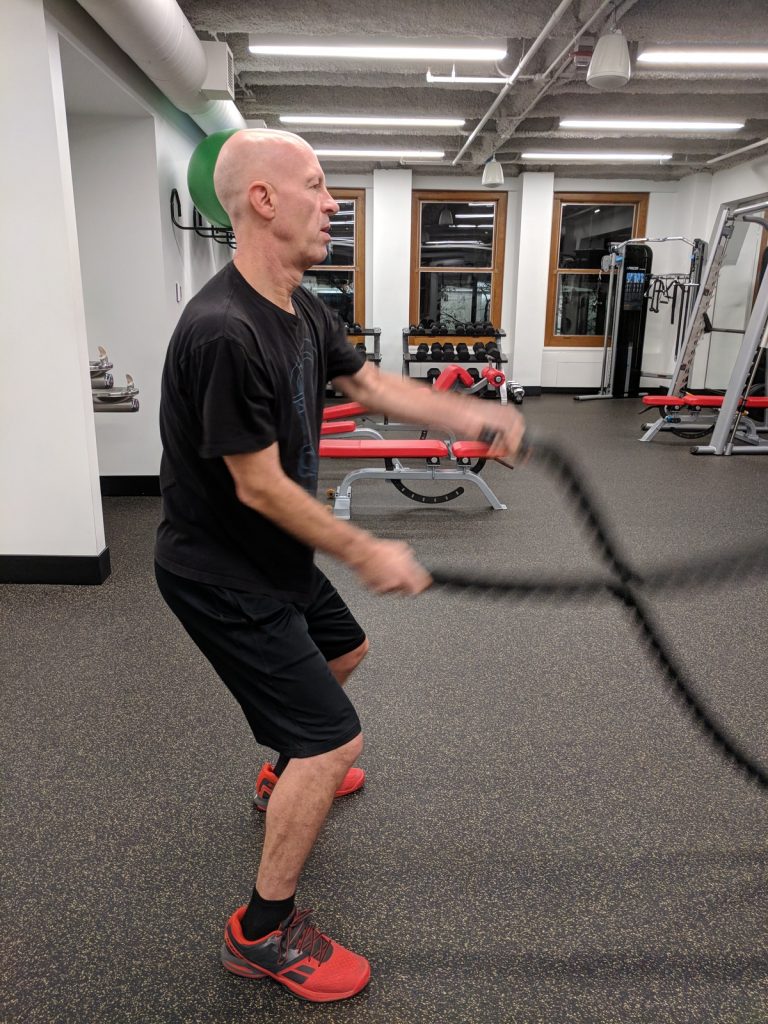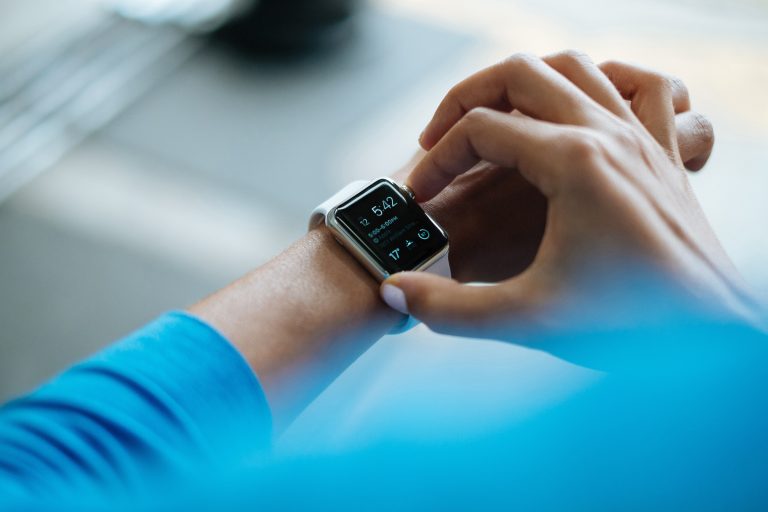Recovery Heart Rate
This is one of my favorite numbers to judge a client’s aerobic fitness. This number is taken from the high end of an aerobic routine and how many beats your heart rate drops during the first minute of recovery. If you are just starting an exercise program don’t expect this be too high. For an avid exerciser, a drop of 30 beat per minute is excellent. I always recommend that you work with a trainer when trying to find your top and baseline heart should be with this test.
The tests and numbers you use for judging the effectiveness of your cardiovascular program is quite different than how one would judge a fitness program for weight loss or muscular gain.
NOTE: If a person is taking Beta Blocker or Calcium Channel Checker medicines the information listed here may not be applicable to your situation.
Always talk to your doctor before beginning any exercise program.

Perceived Exertion
The tricky part about using perceived exertion (P.E) is that everyone’s perception is different. If you are on one of the type of medications listed above, using perceived exertion may be the only way to judge how effective your aerobics program is. The perceived exertion chart is based on the scale of 1 -10.
(1 Being the easiest and 10 the hardest).
The key to using this method is to judge your cardiovascular results by how you feel, (I.e. Breathing, perspiration and overall energy). What does not count is if there are other physical ailments bothering you. If you are running on a treadmill and your knee starts bothering you, that is not part of how you evaluate your progress; it is only how you feel about your exertion levels count.
The Effect of Hydration on Heart Rate
The human body is composed of approximately 70% water. Blood is mostly plasma and plasma is 90% water. When a person is dehydrated the volume of blood decreases, forcing the heart to pump faster to move the blood. When a person is well hydrated during exercise, the heart rate should be lower for the same amount of work then when a person is dehydrated doing the same workout. The benefits here is that if you heart is going to be working at a higher heart rate and intensity it should be because your muscles are propelling your body at a faster or harder level instead of heart just being forced to work harder to move the blood for less work.

Lactic Acid Threshold
For many years, lactic acid was considered to be a “waste product” produced by the body when muscle went from being aerobic into an anaerobic state. Lactic acid is not a waste product, but an energy product. It is also another way to judge how effective your cardiovascular workout is.
For example, you are bike riding on an indoor bike. You warm up for a few minutes, and then start peddling at a cadence of 90 RPM and at a resistance level of 8. After ten minutes at that pace your legs start “burning,” that is the lactic acid being released into your body, it will eventually force you to slow down.
One of the keys to improving performance is training to hold off the lactic acid effect as long as possible. The way you do this, is training a little below and a little above your threshold; also known as interval training. You can get tested and get very specific numbers of what target heart zone to train in, and exactly what heart rate your lactic acid threshold is at, or you can also use a heart rate monitor and use it with the perceived exertion method. What you should find over time is that for the same time, resistance and cadence it should take longer before you feel the effect of lactic acid; which is also a sign of improved performance and oxygen consumption.
Just Do It
The most important thing about doing cardiovascular workouts is doing it. Over time you should see improvements in everyday actives like walking upstairs without being winded and your overall endurance improving.
Get yourself a heart rate monitor to help pace yourself as you go or get familiar with using the Perceived Exertion Table. Most importantly listen to your body! If you become red in the face while exercising, then you need to slow down and drink some water. Make sure that you have a five minute warm up and a five minute cool down time built into your routine.
To get started on your fitness program call 847-772-3487 or click on the link below to inquiry for more information.

For many years research showed that if you workout in a lower heart rate zone you would use more fat during your exercise. Even though this is technically true, you would actually use just as much fat exercising at a higher intensity for a shorter time as well as improving your post workout fat burning process (E.P.O.C.). That is because overall even though percentage wise you use less fat at a higher intensity of exercise, you put out more overall calories. But what is more important than how much fat you use, is that when you exercise aerobically at a higher heart rate intensity, you get fitter!
Long slow distance (LSD) workouts do have their place. If you are a beginner or have not worked out for a long time it is a great way to build up your endurance levels. Also, if you are a sprinter or someone who does plenty of high intensity workouts like spinning classes this is a nice way to change your routine.
Too often people are in a hurry to finish their aerobic workout and get on to the next workout segment or on with their lives. During any aerobic exercise, you increase the heart’s speed and force at which it pumps blood. That blood is force downward below the waist. The legs which are in motion, push the blood back up above the waist, toward the brain.
The blood pooling effect happens when you decided to suddenly stop your cardiovascular workout while you at a high, intense level. Perhaps you stop and get off your bike or treadmill to go answer the phone or refill your water bottle. Either way your heart is still beating very hard and fast, forcing the blood down below your waist, however you have stopped moving your legs at the force or speed that helps propel your blood back up toward your brain as a counter-force to the blood being pushed downward. The end result is that you end up with more blood below the waist then what makes it up to the brain, you can become light headed or even black out; and I have seen this happen! It is always worth a few minutes of your time to spend cooling down from your workout.

Interval workouts are like a “teaser” for the heart. This type of workout allows you to work at a higher level of intensity for a short time, then return to your normal exercise pace.
The intensity and speed you choose to work at is partially based on a person’s fitness level and the type of exercise being performed well as other factors like wind, incline or road terrain. There are many ways to perform an interval routine and they can be included with your anaerobic workout too. Depending on a person’s fitness level and any other medical conditions, I think a person should spend a few weeks creating a solid aerobic baseline and then start adding in interval workouts to their routine. After a few weeks, you should notice that your normal pacing time increases, and that you can handle the intensity better.
